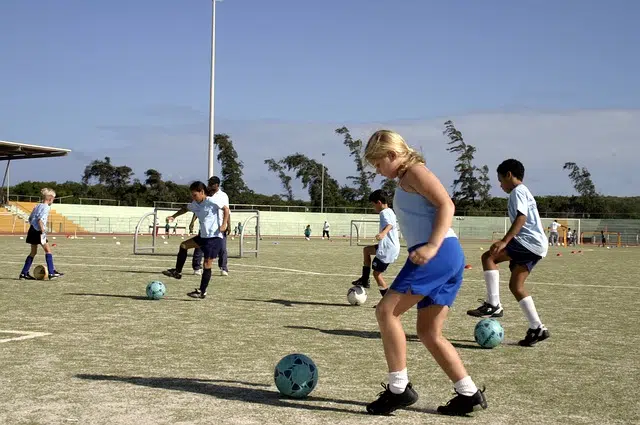
Sports games combine entertainment and competition.
Games are activities whose purpose is the recreation of the participants (called players). Its practice implies respect for a series of rules that govern the dynamics of the game. There are games where a single player participates and other multiple ones, where teams participate.
Games promote the development of practical and psychological skills, while contributing to mental and physical stimulation. Therefore, in addition to providing entertainment and fun to participants, they can fulfill an educational role .
Features of the sport
Sport , on the other hand, consists of carrying out a physical activity, where a set of rules is also respected. The difference with games is that, in the sports field, there is always the competitive desire . Therefore, sports are a competition that always produces a result.
Although physical capacity is very important to obtain a good final result, there are other factors that affect the development of the sport, such as the athlete's equipment (their clothing , instruments, etc.) and mental strength .
In sport, competition is combined with entertainment for both those who practice it and those who watch it. For this reason, sports are professional disciplines , where athletes receive money for their activities and spectators pay to attend stadiums and gyms. Football and baseball , depending on the country, are examples of sports that generate millions of dollars.
What are sports games?
Sports games , in conclusion, are activities that combine, to a greater or lesser extent, different facets of games and sports, such as entertainment, physical development , mental stimulation and competition.

The physical and mental development of children is one of the objectives of sports games.
It is important not to confuse sports games with pre-sports games, which also aim at the physical and mental development of the little ones through an approach to sports in a less demanding way. While pre-sports games focus especially on the discovery of activities and one's own skills, as well as socialization, sports games prioritize technical demands, with tasks that are more difficult to overcome .
Another of the main differences between both types of games is that sports games can be individual or group , and in fact many of them are played without partners, something that is not normal in pre-sports games. This clearly responds to the relevance of technical issues and self-improvement to achieve increasing skill on the way to practicing a complete sport.
Integration and competitiveness
Although sport is open to all people, in practice discrimination, machismo and certain demands mean that many are left out. Sports games, on the other hand, make integration much easier, particularly those that are played one at a time.
Regarding the competitiveness of sports games, as mentioned above, it is present through the rules and conditions of victory, but never as the most important objective but as a thread that merges all the other aspects. In other words, we can say that “winning” is not the main goal but something that participants can achieve if they correctly understand what they should and should not do, if they work with their teammates and if they take advantage of their own strengths.
This brings us to the topic of physical fitness. In sport it is one of the bases, both for admission to a team and for performance in the game: a professional cannot let himself be, eat irresponsibly or lose physical condition. On the other hand, sports games do not impose barriers in this aspect, although the technical demands themselves implicitly incline their participants towards a healthy life.
